Northeastern professor’s simple fix could improve how nurses administer life-saving drugs in intensive care units
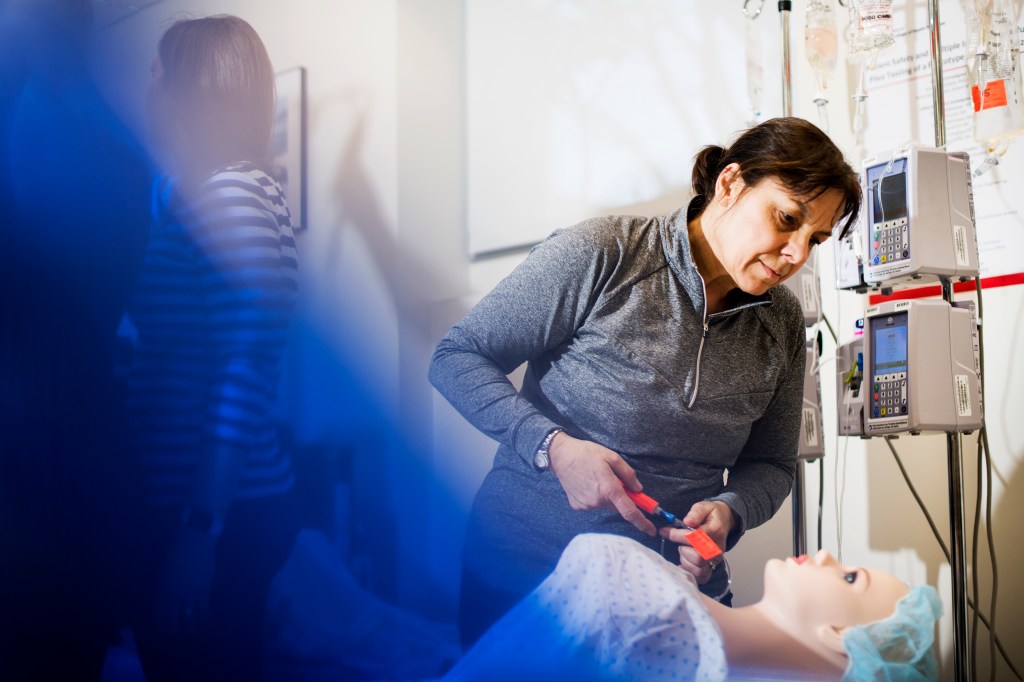
In a hospital’s intensive care unit, every second counts, and mistakes can have serious consequences. Nurses need to administer life-saving medications quickly and accurately, and are frequently caring for multiple patients.
Intravenous smart pumps, which infuse medications into a patient’s bloodstream at a set rate, have helped reduce the number of errors in the intensive care unit. But nurses still need to set up the system and enter the correct dosage information for each medication.
Karen Giuliano, an associate professor in Northeastern’s school of nursing, wants to help nurses handle these tasks as efficiently as possible, and cut down on the potential for errors. She is working on several ways to improve the process, but her first fix is simple: Organize the thin plastic tubes running from the pumps to the patient.

Waleed Meleis, an associate professor of electrical and computer engineering who advises the Enabling Engineering student group, worked with Jack Cardin on the prototype. Photo by Adam Glanzman/Northeastern University
Before giving medication to a patient, nurses must manually trace these tubes, known as intravenous or IV lines, from the bag, through the pump, to the port or catheter in the patient. But the average patient in the intensive care unit is connected to between three and four IV lines, Giuliano says. These lines are often tangled together.
“The idea is to try to do something that’s going to make it easier for the nurse to do that tracing quickly and more accurately all the time,” Giuliano says.
If the wrong line is picked, a nurse might program the dosage into the wrong smart pump or administer a drug that should be going into a major vein into a smaller, peripheral one. These mistakes could over- or under-dose a patient, or delay the delivery of life-saving medications.
Giuliano has designed a simple device to prevent the IV lines from tangling. It’s a flat piece of plastic with cutouts to hold four IV lines in parallel, so that a nurse can quickly follow one line from the pump to the patient. They were 3-D printed at Northeastern’s Enabling Engineering lab, which is run by a student group that designs and builds devices for people with physical and cognitive disabilities.
“She came to me with a rough idea for a prototype,” says Jack Cardin, a high school student taking classes at Northeastern. Cardin manages the modeling and printing in the Enabling Engineering lab. “Using the tools here in the lab and my 3-D printing skills, I was able to come up with a few prototypes for her.”
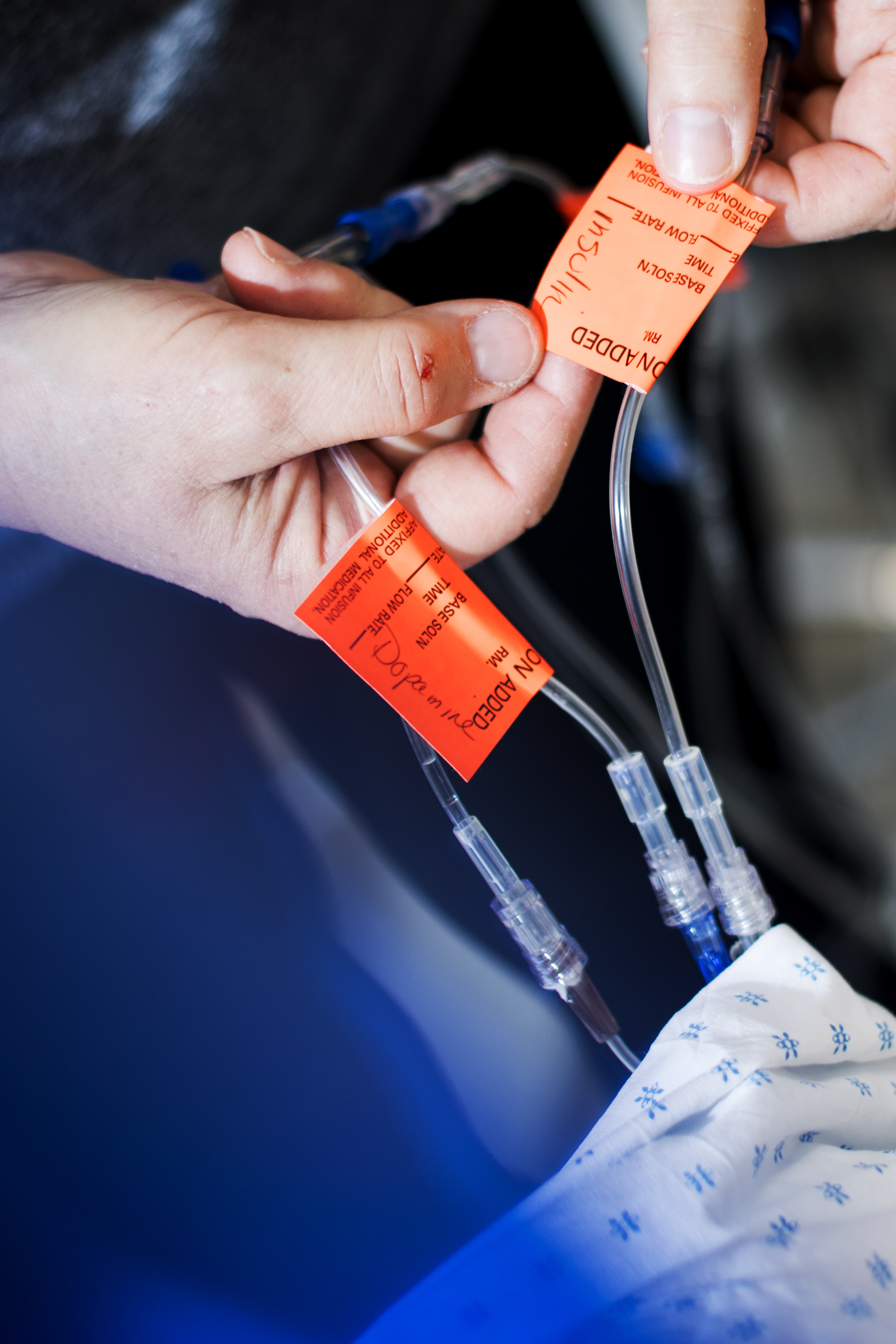
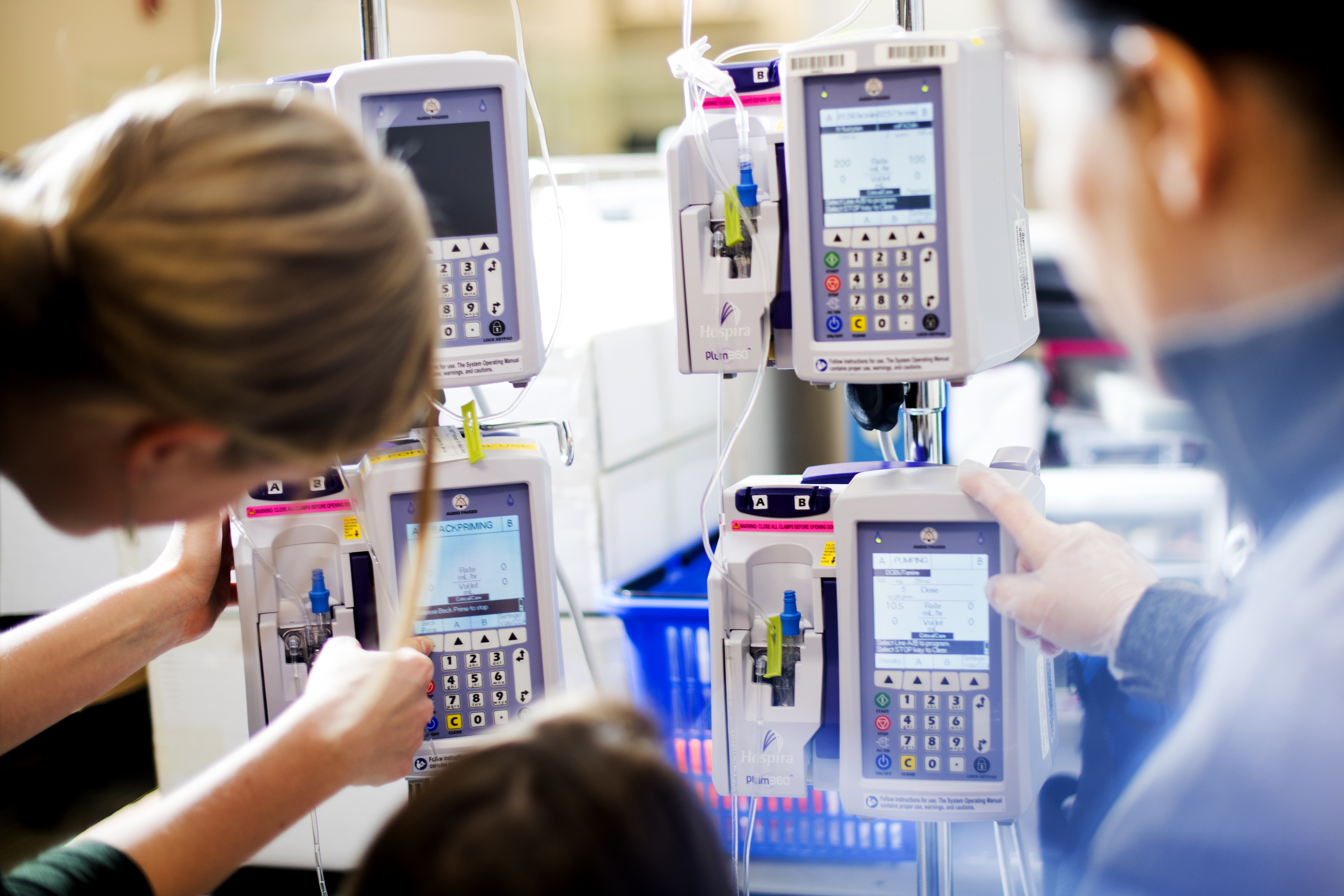
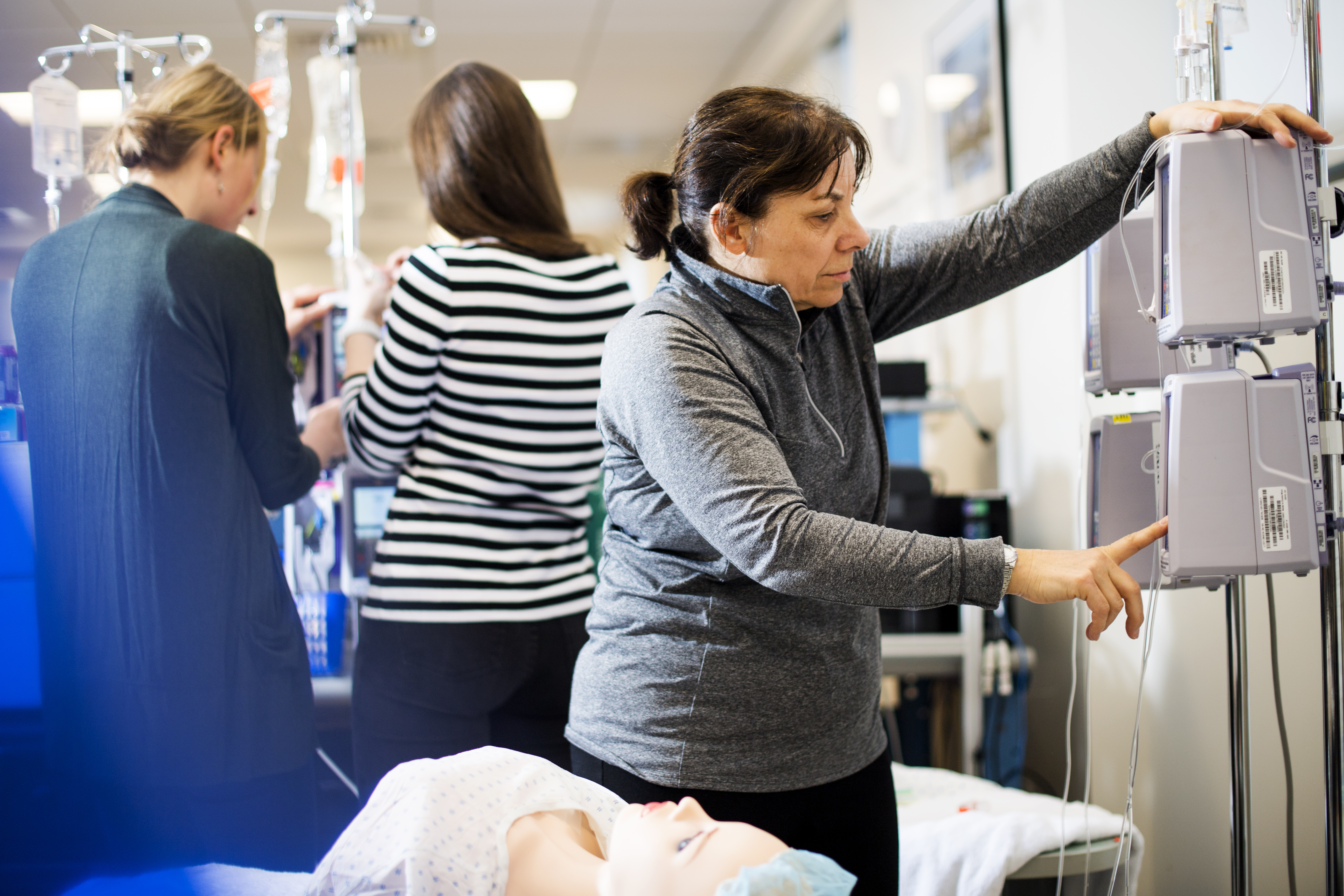
Now Giuliano is using Cardin’s prototypes to see if her organizers will work as well as she hopes. With a team of graduate students in the nurse anesthesia program, Giuliano is recruiting practicing critical care nurses to participate in an experiment to test if their speed and accuracy improves with her device.
“Being in the ICU, and having been a nurse for almost five years, I’ve seen medication errors happen. I’ve done them myself, I know others have as well,” says Julianne McGowan, one of the students helping with the experiment. “Even such a simple device, if that can help prevent any medication errors, I think it’s really important.”
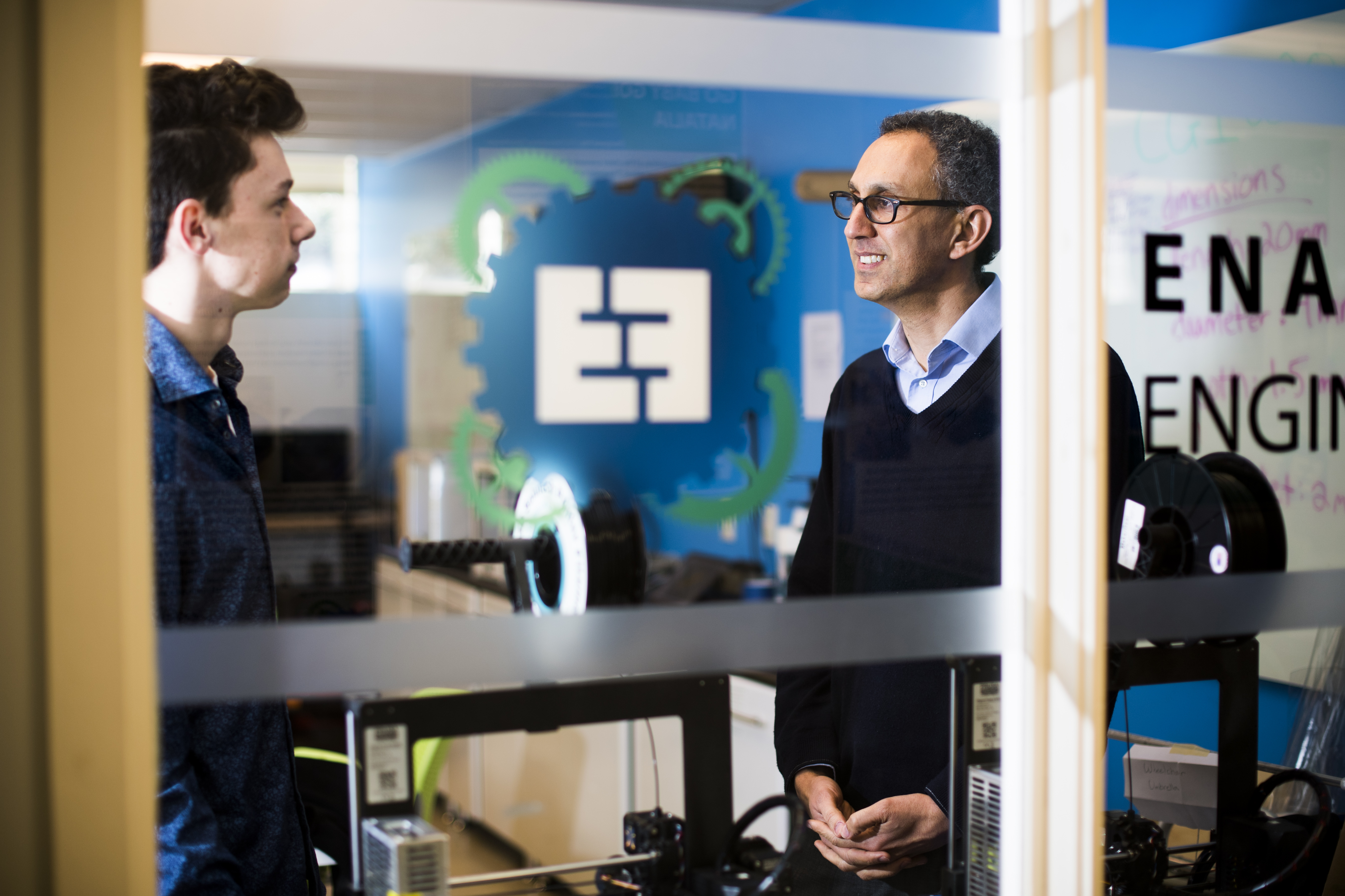

This is just one piece of Giuliano’s work. She hopes to change the entire ergonomics of IV setups and develop a standard design that is easier for nurses and safer for patients. The changes don’t have to be complicated, she says, they just have to take human factors into account.
“Innovation doesn’t always have to take 10 years and multiple multi-million dollar grants,” Guiliano says. “Sometimes it’s kind of simple. Sometimes it’s hiding in plain sight.”
For media inquiries, please contact media@northeastern.edu.





